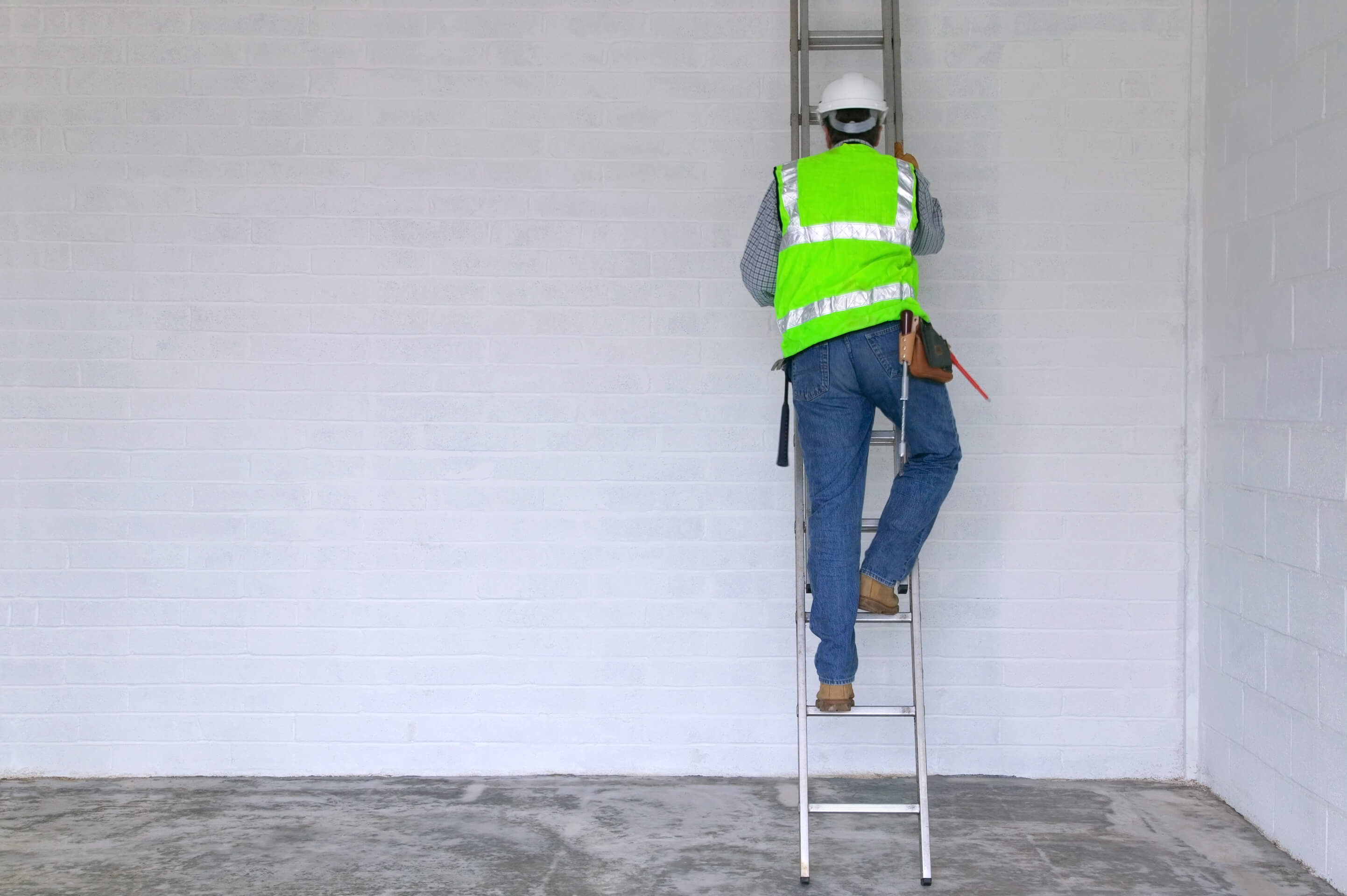Fall protection and safety is a major concern at construction sites. In fact, OSHA cites injuries from falls as one of its top 10 worksite injuries.
Falls and falling objects can result from unstable working surfaces, ladders that are not safely positioned and misuse of fall protection. Workers are also subject to falls or the dangers of falling objects if sides and edges, floor holes and wall openings are not protected. Any time you are working at a height of six feet or more on the construction site, you must be protected.
Unprotected Sides, Wall Openings and Floor Holes
Almost all sites have unprotected sides and edges, wall openings or floor holes at some point during construction. If these sides and openings are not protected, injuries from falls or falling objects may result. Use at least one of the following whenever you are exposed to a fall of six feet or more above a lower level:
- Guardrail systems
- Safety net systems
- Fall arrest systems
Additional Safety Precautions
- Cover or guard floor holes promptly after creating them.
- Construct floor hole covers so they will effectively support two times the weight of workers, equipment and materials that may be imposed on the cover at any one time.
- Use fall prevention systems like guardrails rather than protection systems like safety nets or fall arrest devices.
Ladders
You also increase your chances of falling if you are using portable ladders that are not safely positioned each time you use them. While you are on a ladder, it may move or slip from its supports. You may also lose your balance while getting on and off an unsteady ladder.
Take the following fall protection measures when using ladders:
- Position portable ladders so side rails extend at least three feet above the landing.
- Secure side rails at the top to a rigid support and use a grab device when a three foot extension is not possible.
- Make sure that the weight on the ladder will not cause it to slip off its support.
- Inspect ladders for cracked, broken or defective parts prior to each use. If a ladder is broken, tag it as defective and remove it from service.
- Don’t apply more weight on a ladder than it is designed to support.
- Only use ladders that comply with OSHA standards.
Check out OSHA’s Fall Prevention Training Guide – A Lesson Plan for Employers and consider supplementing your normal employee fall training with toolbox talks that focus on your organization’s unique risks. Contact us today for additional resources.








